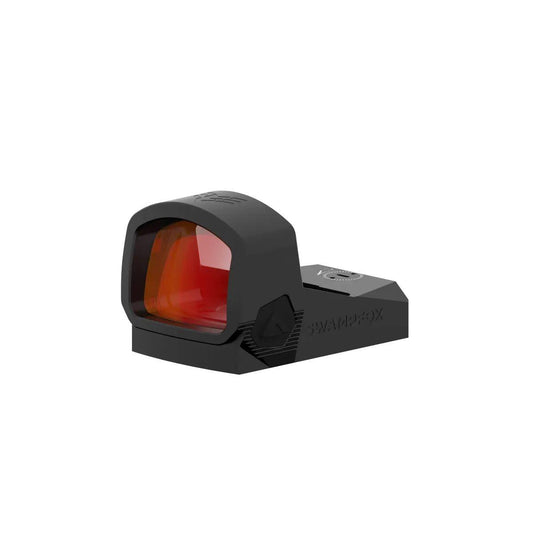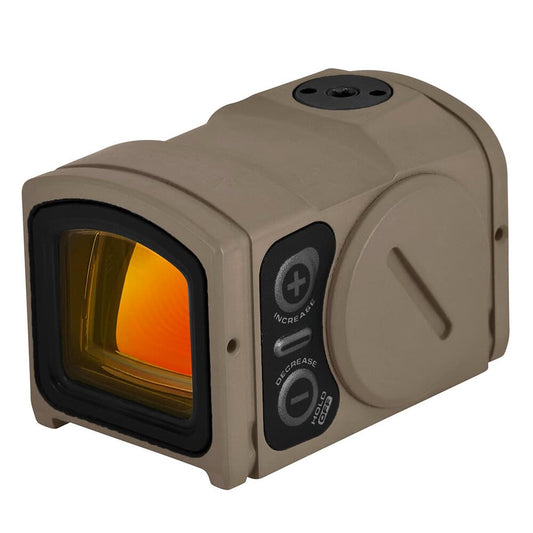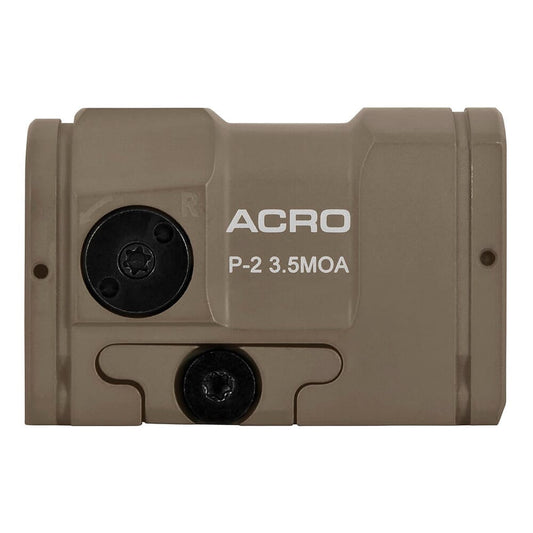

Swampfox Liberty II RMR 1x24 3 MOA Red Dot provides a clear and wide field of view for both fast target acquisition and precise shooting. The 24mm lens offers ample visibility, making it ideal for various shooting conditions. Choose between a red or green 3 MOA dot, or the multi-reticle version that includes four reticle options, allowing for flexibility in your shooting style. With 10 different brightness settings, adjusting the dot's visibility is straightforward, ensuring optimal performance in any lighting situation. The Shake N’ Wake feature automatically powers the optic on or off, preserving battery life without compromising readiness.
Constructed from durable 7075-T6 aluminum, this red dot sight is built to withstand tough environments while protecting its internal components. The lightweight design enhances comfort during extended use, making it suitable for everything from home defense to competitive shooting. The Liberty II’s modern body design not only adds to its ruggedness but also makes it user-friendly across a variety of platforms, ensuring reliability and ease of use for every shooter.
Key Features:
- WIDE FIELD OF VIEW for unparalleled situational awareness.
- VERSATILE RETICLE OPTIONS tailored for every shooting preference.
- 10 ILLUMINATION SETTINGS ensure clarity in diverse lighting conditions.
- SHAKE N’ WAKE TECHNOLOGY saves battery life, so it’s always ready.
- DURABLE CONSTRUCTION made from rugged 7075-T6 aluminum for long-lasting use.
- LIGHTWEIGHT DESIGN enhances comfort without sacrificing performance.
- EASY INSTALLATION fits standard RMR footprint for quick setup on various platforms.
- MODERN BODY DESIGN provides an aesthetic appeal alongside superior functionality.
Technical Specifications Table
| Specification | Details |
|---|---|
| Magnification | 1x |
| Lens Diameter | 24mm |
| Weight | 4.2 oz |
| Dimensions | 2.5" x 1.5" x 1.5" |
| Material | 7075-T6 Aluminum |
What’s in the Box?
- Liberty II RMR Red Dot Sight
- Lens covers
- Padded case
- Mounting hardware
- User manual
Customer Reviews
"The clarity and versatility of the Liberty II make it my go-to for every situation!"
"I love the multiple reticle options. It adapts perfectly to whatever I'm shooting!"
FAQ
What is the battery life of the Liberty II RMR? The Liberty II features an efficient battery system, allowing for an extended life depending on use and illumination settings. With the Shake N’ Wake feature, you can maximize its lifespan while ensuring it's ready for action.
How does the Liberty II compare to other red dot sights? Unlike many competitors, the Liberty II offers multiple reticle options and superior durability with its aluminum body, making it ideal for a variety of shooting applications. Its advanced illumination settings also provide an edge in performance.
Similar Models
Looking for the perfect addition to your shooting gear? Discover our extensive Swampfox lineup, including models like the Swampfox Sentinel for enhanced reflex shooting and the Swampfox Justice for long-range optics. Explore our full collection for exceptional optics tailored to your adventures.
You May Also Like
Here’s some of our most similar products people are buying. Click to discover trending style.








